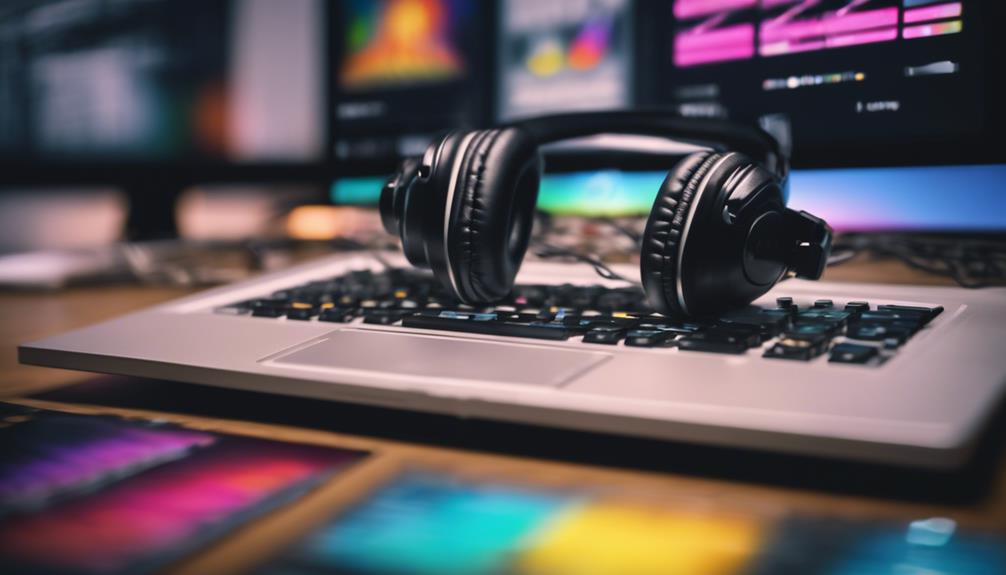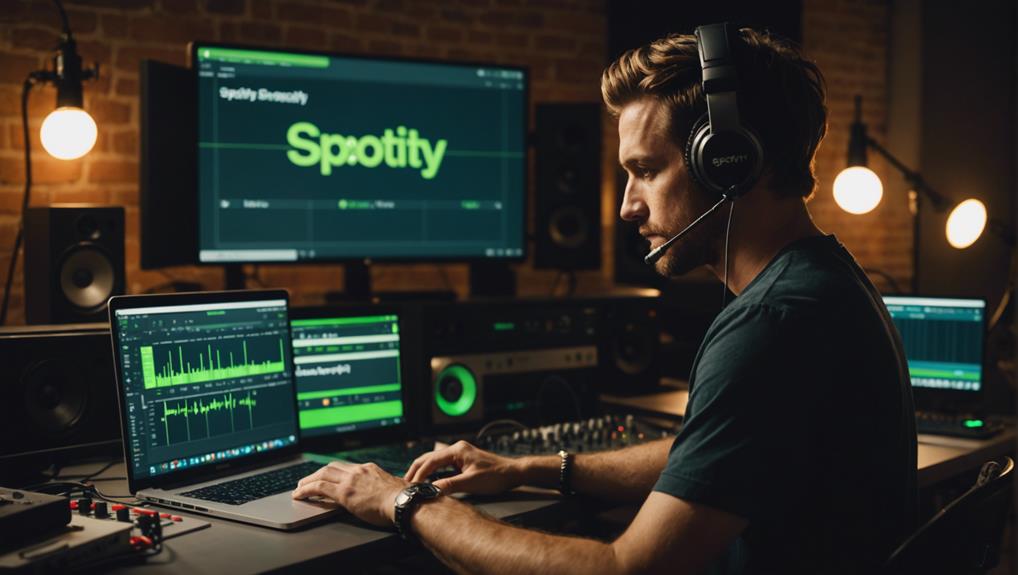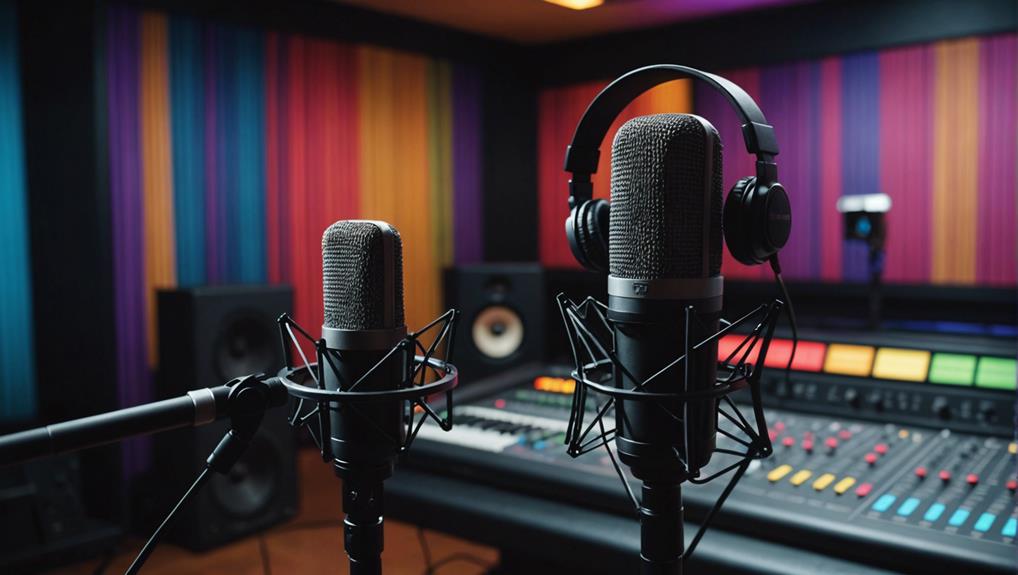If you’re an artist looking to get your music on Spotify, the process starts with choosing the right digital service provider, like TuneCore or LANDR, to distribute your tracks. You’ll need to prepare high-quality WAV or FLAC files with embedded metadata, ensuring everything meets Spotify’s standards. Understanding the distribution terms is essential, as it affects how you’ll get paid. After setting up your artist profile with Spotify for Artists, the next step is submitting your music for release. But what happens next can make or break your musical journey on Spotify.
TL-DR
- Choose a digital service provider like TuneCore, RouteNote, or LANDR for music distribution.
- Prepare high-quality music files in WAV or FLAC format with embedded metadata.
- Set up an artist account and customize your Spotify for Artists profile.
- Collaborate with a distributor for accurate metadata and high-quality cover art.
- Promote your release using Spotify’s promotional tools and pitch songs to playlists.
Choose a Digital Service Provider

To get your music on Spotify, you’ll first need to choose a Digital Service Provider (DSP) like TuneCore, RouteNote, or LANDR. These platforms act as intermediaries, helping you distribute your digital music to Spotify and other music platforms. Using a DSP makes it easier for you to manage your releases and get your songs heard by a wider audience.
TuneCore is a popular choice because it offers affordable fee structures and allows you to retain all rights to your music while receiving 100% of the royalties. If you prefer a budget-friendly option, RouteNote lets you upload your music to Spotify for free, taking a 15% cut of the streaming profits. This can be particularly beneficial if you’re just starting out and want to test the waters without incurring upfront costs.
LANDR, on the other hand, not only acts as a distributor to upload your music but also provides mastering services, ensuring your tracks sound professional. They offer various pricing options, including a monthly subscription, making it flexible for different needs.
Once you’ve chosen a DSP, you’ll create an artist profile, which is essential for branding and connecting with fans. Each DSP has its own set of tools to help you manage this, ensuring your music stands out on Spotify and other platforms.
Prepare Your Music Files
Prior to uploading your music to Spotify, make sure your files are in the required format and meet the platform’s quality standards. First, guarantee your music files are either in WAV or FLAC format, as these are the preferred formats for Spotify. The quality of your music files should be excellent, with a recommended bitrate of 320 kbps. This will ensure that your listeners enjoy the best possible sound quality.
Next, you’ll need to embed essential metadata into your music files. This includes track titles, artist names, album art, and release dates. Proper metadata helps Spotify organize and display your songs correctly on the platform.
To keep things organized, structure your music files into folders that are easy to navigate. This will make the upload process smoother and more efficient.
Understand Distribution Terms

When uploading your music to Spotify, it’s important to understand the distribution terms with Digital Service Providers (DSPs) to make sure you’re making informed decisions. DSPs are the channels through which your music gets onto Spotify, and they come with various terms and conditions. Some DSPs charge fees for music distribution, while others might take a percentage of your royalties. It’s vital to weigh these costs against the potential earnings from your music being played on Spotify.
Choosing the right music distributor can have a substantial impact on your artist growth. Some distributors not only upload music to Spotify but also distribute it across multiple platforms, thereby increasing your visibility. This broader reach can lead to more plays and higher royalties. You’ll want to carefully research different DSPs to find the one that best fits your needs. Consider their fees, the platforms they distribute to, and the support they offer for your Spotify for Artists profile.
Ultimately, selecting the right DSP ensures that your music distribution strategy aligns with your goals, maximizing your reach and income. Make informed choices to enhance your presence on Spotify and support your ongoing artist growth.
Create an Artist Profile
To get started, you’ll need to set up your artist account through a digital music distributor like TuneCore or iMusician.
Once your profile is claimed and verified on Spotify for Artists, you can customize it by adding a bio, photos, and links.
This personalization helps you connect with fans and showcase your music effectively.
Setup Artist Account
Setting up an artist account on Spotify for Artists is the first step to managing your music and engaging with fans. To begin, you need to visit the Spotify for Artists website and sign up for an account. This process involves providing some basic information to verify your identity, ensuring you gain full access to your artist profile.
Once verified, you’ll have the tools to upload and release your music directly on Spotify.
After you’ve created your artist profile, you can start to manage and customize it. Your Spotify for Artists dashboard is where you’ll handle everything from uploading tracks to tracking their performance. This dashboard allows you to see how your music is performing in real time, giving you insights into your audience and streams.
Additionally, you can personalize your profile by adding photos, a bio, and social media links. These elements help you connect with your audience on a deeper level.
Customize Profile Details
Now that you’ve set up your artist account, it’s time to customize your profile details to make a lasting impression on listeners. Use Spotify for Artists to manage and update your artist profile, ensuring it reflects your unique identity and music.
Start by adding high-quality photos and a compelling bio that tells your story and connects with your audience. Engaging content is key, so make sure your bio is both informative and interesting.
Next, include your social media links to allow fans to follow you across different platforms. This not only helps increase your visibility but also keeps your audience engaged with your latest updates. Don’t forget to add links to your merch if you have any. Selling merch directly from your profile can be a great way to monetize your music and build a loyal fanbase.
Regularly update your profile to keep it fresh and relevant. A well-crafted artist profile can attract more listeners and fans, making it easier for them to discover and connect with your music.
Utilize the customization options available on Spotify for Artists to create a professional and compelling representation of your music brand.
Submit Your Music for Release

Submitting your music for release on Spotify involves collaborating with a digital music distributor to make sure your tracks, metadata, and cover art are in perfect order. To submit your music, you’ll need to choose a distributor that suits your needs. For independent artists, partnering with Spotify-recommended music distributors can streamline the process and save you from additional fees. These distributors handle the logistics, ensuring your music reaches Spotify seamlessly.
Planning your release timing is vital. Give yourself ample time to upload your tracks, review the metadata, and finalize the cover art. This helps prevent any last-minute issues that could delay your release. Metadata, including track titles, artist names, and album details, should be accurate and complete to make sure your music is easily discoverable.
High-quality cover art is essential as it’s the first visual impression of your music. Make sure it meets Spotify’s specifications and reflects your brand.
Researching and selecting the right digital music distributor can help you navigate the submission process effectively. Distributors not only upload your music but also provide reporting on streams and earnings, maximizing your reach and impact on Spotify.
Promote Your Release
Promoting your release effectively can greatly amplify your music’s reach and connect you with a broader audience. Start by using Spotify for Artists to pitch your songs to Spotify-curated playlists. This can greatly enhance your visibility and attract new listeners. Regularly update your profile with fresh content, making sure that fans remain engaged and informed about your latest projects.
Engaging with fans is essential. Share exclusive content on social media, such as behind-the-scenes videos, song snippets, or personal stories about your music. This helps build a stronger connection with your audience and keeps them excited about your release.
Consider collaborating with other artists, influencers, or brands to cross-promote your release. These partnerships can introduce your music to new demographics, expanding your listener base. Additionally, leverage Spotify’s promotional tools like Canvas, Marquee, and Sponsored Recommendations to further enhance your music’s reach.
Running targeted advertising campaigns on Spotify can also be an effective way to promote your release. By focusing on specific demographics, you can make sure that your music reaches the right ears. Remember, a well-executed promotional strategy is key to maximizing the impact of your release.
Monitor Your Performance

Now that your music is live, use Spotify for Artists to analyze your streaming metrics and track audience growth. Check your streams, listeners, and playlist placements to see how your music is performing.
Regularly review your audience data to understand who’s listening and where they’re from.
Analyze Streaming Metrics
How can you optimize your music promotion strategy without first analyzing your streaming metrics on Spotify? Using Spotify for Artists, you have access to a wealth of data analysis tools that can greatly enhance your promotional efforts. By monitoring streaming metrics, you’ll gain insights into listener engagement, playlist placements, and more. This data helps you understand how often your music is played, which songs are skipped, and where your listeners are adding your tracks to their playlists.
Dive into audience demographics to tailor your strategies effectively. Knowing the age, gender, and location of your audience will allow you to create more targeted marketing campaigns. Additionally, analyzing trends in listener engagement can reveal peak listening times, helping you optimize your release schedules for maximum impact.
Keep an eye on critical metrics like monthly listeners, streams, and followers. These figures will show you which songs resonate the most with your audience, guiding you in adjusting your promotional efforts. Pay attention to playlist placements as well; being featured on popular playlists can greatly boost your visibility.
Regularly monitor your Spotify analytics to stay informed and continually refine your music promotion strategy.
Track Audience Growth
Understanding your streaming metrics is just the beginning; tracking audience growth on Spotify for Artists allows you to monitor your performance and refine your promotional strategies. Use Spotify for Artists to track your audience growth, focusing on key metrics like monthly listeners, streams, and followers. By analyzing these numbers, you can gain insights into your audience engagement and streaming activity.
Monitoring your performance involves looking for trends in how your audience interacts with your music. Are your monthly listeners increasing? Are your streams growing steadily? Keep a close eye on your followers to see if your promotional efforts, such as playlist placements and social media campaigns, are paying off.
Spotify’s analytics tools provide detailed information about where your listeners are located and how they’re discovering your music. This data is essential for tailoring your promotional strategies and making informed decisions about where to focus your efforts.
For example, if you notice a spike in streams from a particular region, you might want to target that area more aggressively with your marketing campaigns.
Get Paid From Streams
Earning money from your music on Spotify involves understanding how the platform’s pro-rata royalty model works. Spotify pays artists based on the total streams across the platform and each artist’s share of those streams. Fundamentally, the royalties you earn are a fraction of the overall revenue Spotify generates from subscriptions and ads.
The average payout per stream ranges from $0.003 to $0.005, but it can vary depending on factors like the listener’s location and subscription tier. To get these earnings, you need a distributor. The distributor collects your royalties from Spotify and then distributes your earnings to you. Make sure you choose a reliable distributor to make certain you get paid accurately and on time.
Spotify for Artists is a valuable tool that gives you detailed analytics about your streams, listeners, and playlists. It also provides transparency about your revenue, allowing you to see precisely how much you’re earning per stream. Understanding this data helps you track your income and strategize on how to boost your streams and, consequently, your royalties.
Next up, learn how to go from amateur to pro artist in this guide.



